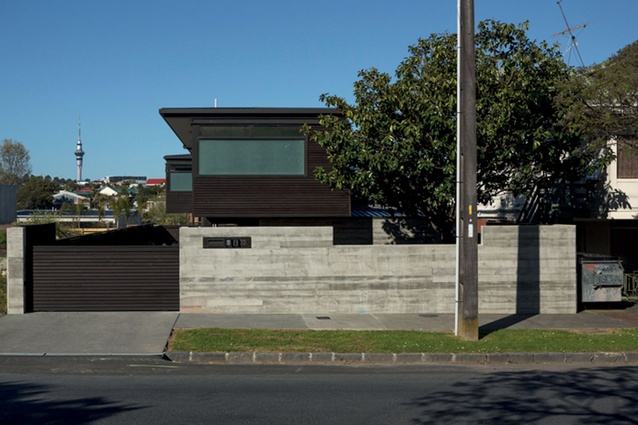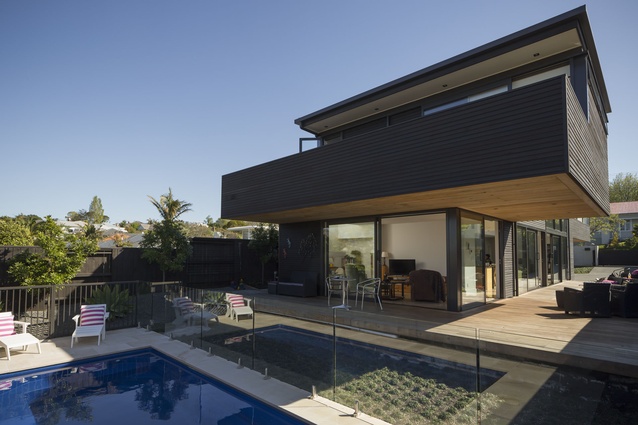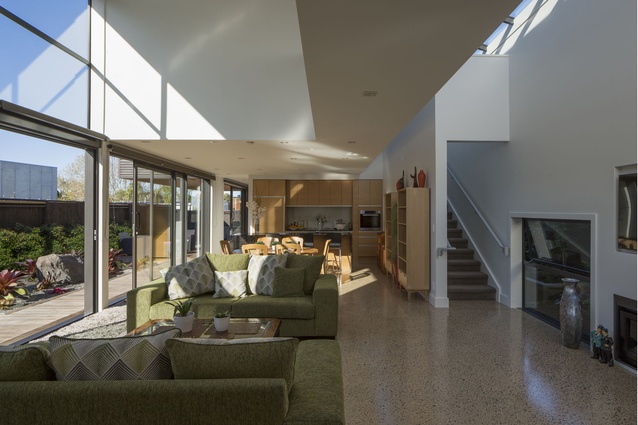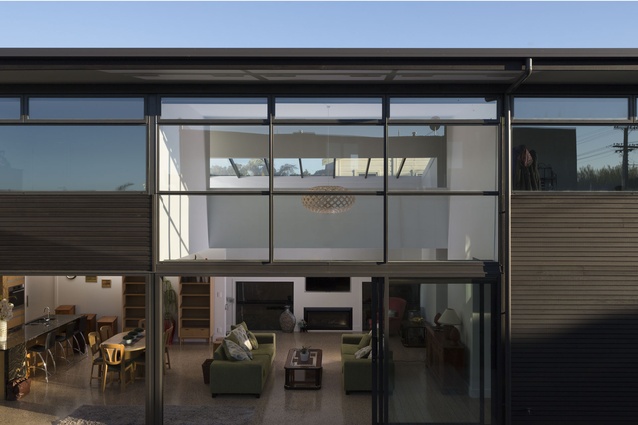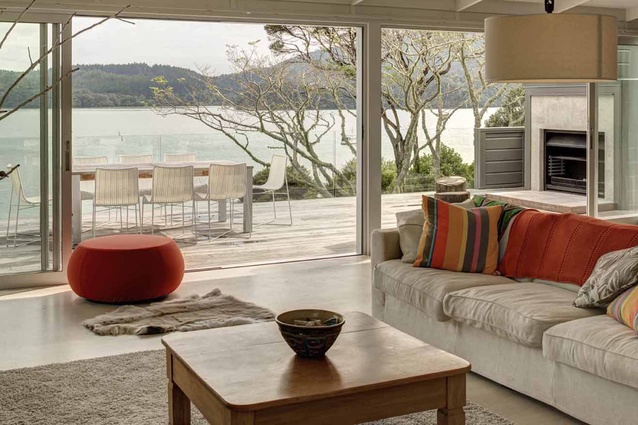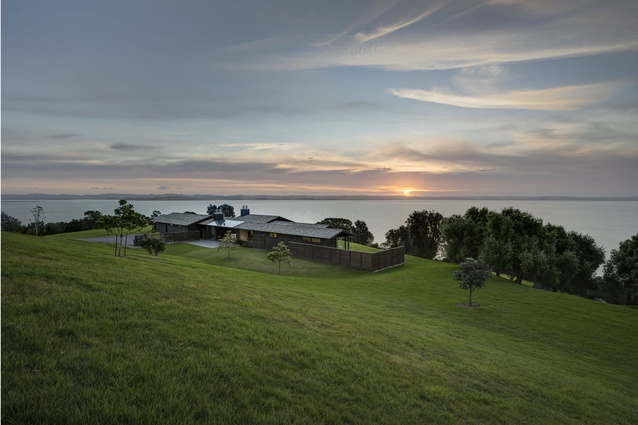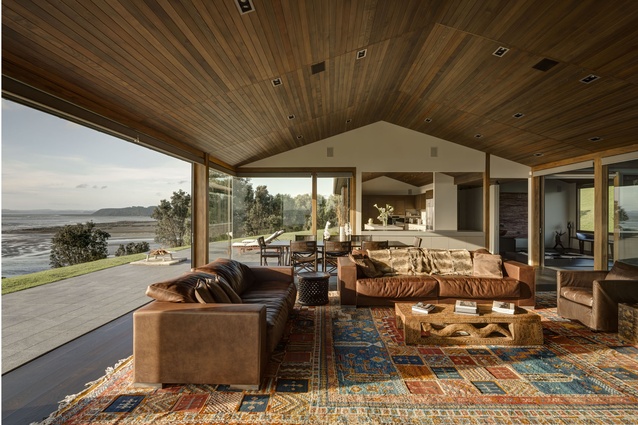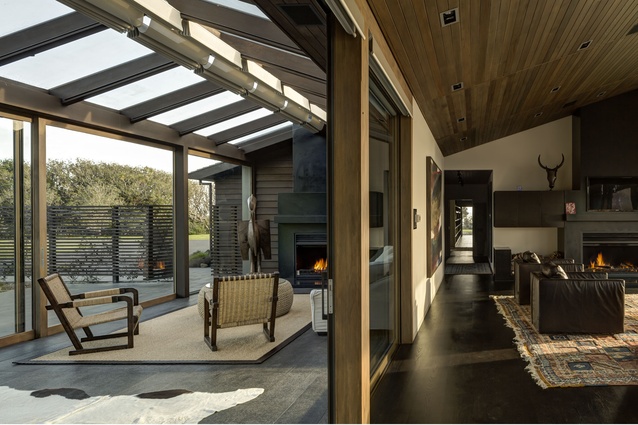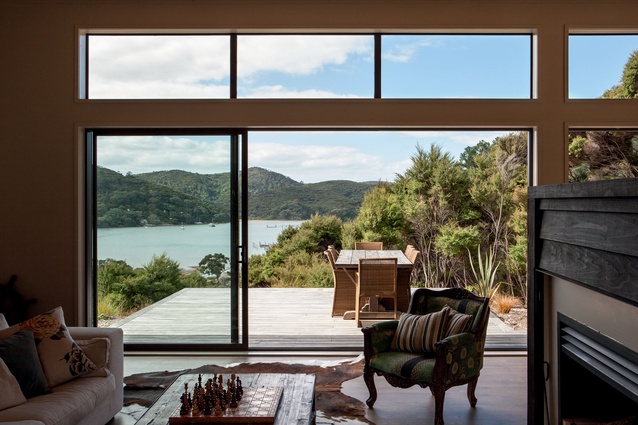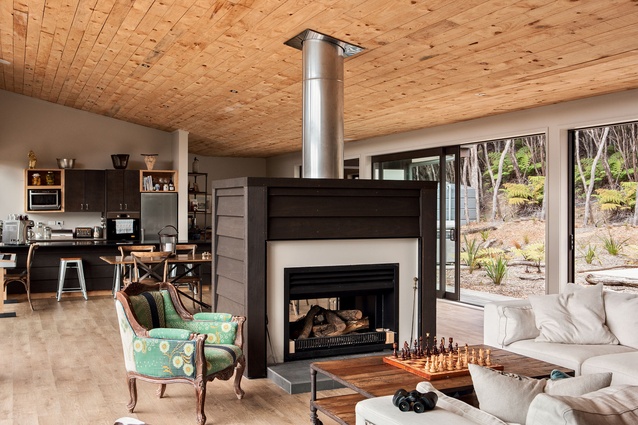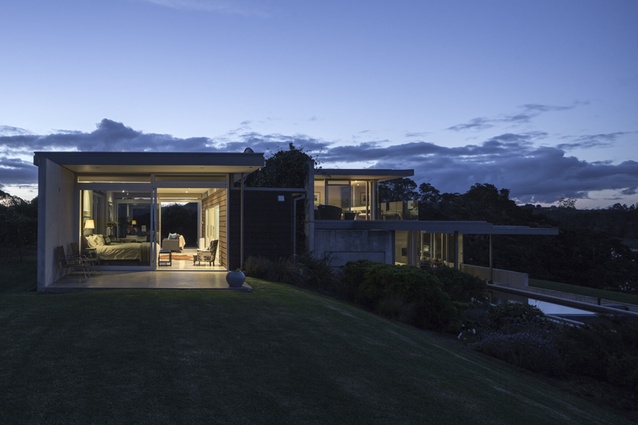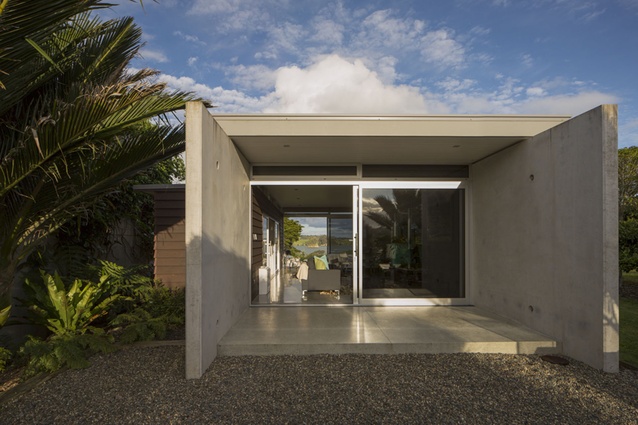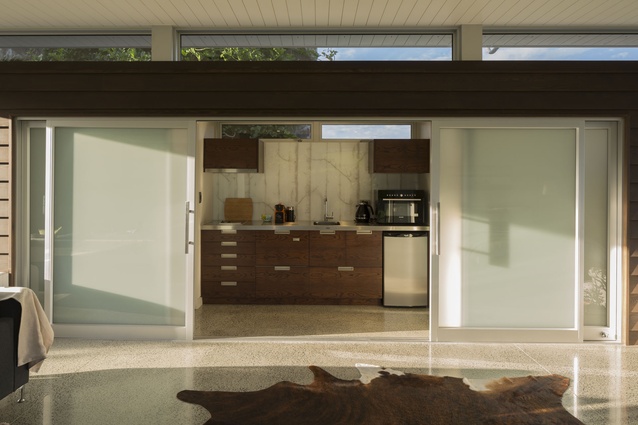Tom Rowe of Rowe Baetens Architecture
Houses editor Justin Foote talks to architect and self-confessed ‘architecture chaser’ Tom Rowe about finding atmosphere in the built spaces around us.
Houses: Have you always wanted to be an architect?
TR: I wanted to be an inventor. Ever since kindergarten I’ve been fascinated with putting things together and by innovation. At one point I’d also wanted to be an aeronautical engineer.
Houses: So how did you go from inventing or aeronautics to architecture?
TR: I think architecture became a logical progression, one that encapsulated a philosophical bent that wasn’t apparent within physics or engineering. I had a fascination with philosophy during high school – Asian philosophy in particular – and from that architecture naturally fell into place.
Houses: Would you say you have a set philosophy when it comes to architecture?
TR: There are some rules that I have that would ‘almost’ be taboo and unbreakable in most circumstances, which is perhaps a definition of philosophy. I would hate to have a stylism and rather, I have some core values that I want to preserve throughout my architectural career and to make architecture that inherently follows and includes those values – that architecture has a strong formative bearing on how we grow and how we perceive and how we occupy our worlds and consequently how we construct our inner worlds.
JF: How long have you been Rowe Baetens Architecture?
TR: Three-and-a-half years.
JF: And before that?
TR: I worked for Noel Lane for nine years. Also, Saskia [Baetens] worked for ASC, as well as in Belgium and for Hillery Priest.
Houses: Do you maintain individual roles, or are you both involved across all facets?
TR: We’ve got two young children, so at the moment mine is more an oversight and director sort of status while Saskia’s involved in the ongoing review and assessment of all projects.
Houses: And are you both fairly aligned, philosophically speaking?
TR: I think philosophically speaking we’re very closely aligned as well as from an architectural perspective. We’ve both travelled intensely and deliberately in search of architectural buildings, to the point that it becomes an obsession. Like you see those people chasing storms, we’re probably their equivalent, only we’re chasing architectural monuments. We’re fundamentally interested in good buildings and those that will be eternally good. We’re both interested in art and the role of art and architecture in a wider cultural sense; it’s implications for people and for thought and for expression and what that means in terms of the future.
Houses: How do the two – art and architecture – feed each other or feed off each other?
TR: There’s a huge amount of literature about where architecture starts and architecture stops and where art starts and art stops. My favourite analogy on the subject is that of Anish Kapoor, who says the difference is that art has no plumbing, which is quite good because you get these fantastic artists who work with light and space, the abstracts of architecture, and the fact that they do is hugely beneficial to architecture and to the potential of architecture; also, it can be highly frivolous and fun.
Houses: Do you think people are becoming better at understanding architecture as a craft, or do you think, particularly in New Zealand, that the idea that architects occupy the elite end of home building still prevails – are architects being appreciated on a broader level?
TR: I think there are three important components to that discussion. The first being a subject that Gottfried Semper wrote about in The Four Elements of Architecture. In the book he looks at architecture from an anthropological focus and about the fundamental root of architecture being that walls, as we know them, are a progression from woven panels as spatial dividers and that the act of making a mound or making a pit or weaving or tying a knot is, in itself, an intrinsic act of architecture at its most basic and widest expanse. As a society, we are becoming more obsessed or more interested in surface and image than ever before and I think Semper’s idea of that intrinsic nature behind architecture is probably something that is diverging from our culture more so than it has in the past.
In terms of an elitist mindset, I think it’s important to note that in speaking with architects and people who live overseas, you discover that, in New Zealand, we live in a highly customised architectonic world. While it may be that only 10% of houses here are designed by architects in a custom one-off manner, if you go to any of the large European cities it’s even more elitist and more privileged – it would be very rare for someone to live in a custom-designed house. So, just in terms of houses specifically, I think that’s an important thing to consider and that, because of our history and because of who we are, we have the distinction of having a really strong, innovative architecture sector in New Zealand. I think it’s really positive. One of the really nice things about architectural houses in New Zealand is that they have their own identity, that each one of them is its own prototype for a whole kind of conception, a canon of sorts, of ideas brought together and it represents this whole. I like that.
The third component is the notion that architecture is/isn’t accessible. There is a tendency for people to baulk at the cost associated with architects, but to not bat an eye at the cost associated with real estate agents. I would argue, based on the actual contribution to the end result of one over the other, there’s huge benefit to paying 10-15% for an architect compared to what you’d pay a real estate agent, particularly, if you were to spend the same money. I think architecture can be accessible for a lot more people than it is and that there’s still a lot of potential for the general homeowner to explore it as a viable option.
Houses: That’s a rather provocative statement; you’ll have every real estate agent in Auckland gunning for you now. In terms of your own designs, is that something you set out to achieve – to be innovative and perhaps provocative as well, are these elements that you’re striving for every time you design?
TR: Certainly not to be in any way provocative just for the sake of it. The objective is to achieve something that will be timeless; that people will appreciate for their lives and subsequent owners will appreciate. Innovation is really important; to take people on a journey to somewhere they haven’t been to before and to arrive at a result that overshoots their expectations and is something to be proud of. I think the other thing is that people have different expectations. Some people have expectations of the highest level in terms of architecture and some people don’t and I think it’s really important to deliver space and to deliver volume and to deliver materiality and mass, all of those things that are effectively architecture but also to consider budget in a way that makes sense. Some people actually don’t need negative details running right around the walls and up the doorways and they can’t afford that but they can still afford architecture.
Houses: You mentioned innovation earlier, how do you give someone innovation? Is it purely a physical, technological thing or can it be perceptive?
TR: For me, it’s inherently not technologically based. The innovation that occurs between an architect and a client lies in taking the client somewhere they didn’t expect to go but that satisfies their needs. It may be as simple as doubling the height of a volume or changing the programme or the budget so it suits or expresses proportionately the value of the activity. It’s innovation in terms of brief and construction, which may be technology in the strictest sense, however, I think the technological innovation that occurs in architecture isn’t necessarily putting in the latest voice-activated light switch.
Houses: I was reading an American article the other day about tiny houses, in which they were talking about achieving a viable living space within 100 to 400 square feet – and given that we’re talking the best part of a million dollars for what would be an average house in Auckland – is the innovation you’re talking about going to take place in smaller and smaller spaces in the future?
TR: There was something in the paper yesterday about that sort of thing as well. Certainly, because land is so highly regulated and restrictive within Auckland, the value of it can only climb and it may be that the size of houses might have to shrink as a response. However, some of the best architecture in the world works very well around that, like in Japan, where people have been incredibly innovative with micro living. You know, Elizabeth Diller of US firm Diller Scofidio + Renfro says “there’s nothing that dates faster than speculation about the future”, so while I’m sure there’s going to be both a need and a demand for small scale living, I think the demand for the other end of the scale will always be there.
Houses: For you personally, is there a bigger buzz going small or going large?
TR: In terms of footprint I’m probably ambivalent but in terms of volume, personally, larger volumes are what I appreciate over smaller volumes. I think within small volumes it’s difficult to create the kind of architectonic interplay between spaces and their relative importance and their relative value.
Houses: What are you working on at the moment in terms of residential projects?
TR: We have five houses under construction at the moment and are working on another eight or nine houses. We have a house which is entirely wrapped in Italian travertine, which is a fun thing to be involved with; we have another house, which is a kind of collection of timber huts that we’re working on in conjunction with another architect; we’ve got another one which is a sort of floating roof pavilion anchored by a couple of textured concrete boxes as a garage and kitchen, which is fun as well.
Houses: Are these all houses around Auckland?
TR: Within Auckland and north of Auckland.
Houses: So you’ve got some fairly diverse projects on the go at the moment.
TR: Yeah we do, we’ve got houses that would be four or five million and then ones that would be less than million, in terms of value. We have also designed and mass produced very small scale objects for houses including coat hooks, toilet roll holders and vases. It’s important that an idea can be infinite and apply across a multitude of scales and applications.
Houses: I was talking with Simon Novak and Richard Middleton, for the previous issue, about what people outside of Wellington can learn from Wellington architecture, from a geographically constrained perspective. Auckland has the almost opposite conundrum in that it’s continually sprawling; is there an Auckland architecture that other architects can draw from?
TR: I don’t think, at least in regards to the projects we’re involved with in Auckland, that they’re inherently Auckland-esque but they probably have a New Zealand sort of style. I think people are probably more daring in New Zealand than they perhaps are overseas in terms of aesthetic, which I imagine is an attraction for people from outside of New Zealand.
Houses: How influenced by your travels is your own work. Sure, you’re not likely to reinvent the coliseum but in terms of from where you draw inspiration, how does that influence work?
TR: I’m probably heavily influenced by what I’ve seen, as everyone is to a degree. You’re right, you’re not going to mimic the coliseum but in saying that, there’re probably elements of buildings in Rome that do have a real bearing on what we do. It’s probably more of a response to the tone of the architecture rather than the programmatic and functional requirements; more about the kind of felt meaning or felt inherent qualities of space. I think those things are really fundamental and the way that we build has a real consequence on the way we feel in different spaces. Alain de Botton wrote in Architecture of Happiness that “…even if we could spend the rest of our lives in the Villa Rotonda or the Glass House, we would still often be in a bad mood.” But I think it’s also important to consider the influence it has on our psychology, on our worldview and that sort of thing. We’ll talk about the tone of a sound or the tone of a painting, or we’ll talk about the emotional density of weather and its effect but we don’t talk a lot about the atmosphere of architecture, of walking into a building and feeling one thing or the next but I think they are powerful sensations that we experience, whether we like it or not.
Houses: Do you think that’s a case of our not being educated to see architecture in that way?
TR: I think it’s more a case that we just don’t talk about it, we respond to it, but we don’t articulate it. I like the comparison with the weather because we can talk about it at length with a complete stranger, continuously and vigorously and frequently, but we never talk in that way about spaces, but I think we do experience it in an equal, sometimes even more frequent way.
Houses: So, which buildings, either here or overseas, have been particularly stand out for you?
TR: There are a lot of them. There are the ones that we set out deliberately to see, such as Peter Zumthor’s baths in Vals, Switzerland, but then there have been more that I’ve happened across, temples in China that hang off the sides of cliffs seemingly defying tectonics for example. There’s a bathhouse I went into in Bursa, Turkey that comprises a series of chambers within two large, domed marble volumes. In the centre of one of the chambers is a large pool directly beneath the dome, which has scores of oculi where light is pouring through the white marble. It’s probably two or three hundred years old and I just sort of stumbled across it but it was the most incredible space. It was a combination of the light and the sensual elements of water and warmth and of space and the density of the air and those sorts of things. Very, very compelling.
Houses: What about closer to home?
TR: As I said earlier, I worked for Noel Lane for nine years and experiencing his buildings in the flesh has been hugely formative. It has really stretched my imagination as to what’s possible. Even on a domestic scale, I’m not sure if the word is euphoria necessarily correct, but you have this overwhelming emotional response; you walk into a space and think ‘wow, this is incredible’.
Houses: I think for most of us, that’s the kind of response we have to civic architecture. We’re trained to be in awe of grand buildings, I mean, I do it every time I walk into the Auckland War Memorial Museum.
TR: Yeah, it has all of those reinforcing characteristics of the power of architecture that have classically been followed for hundreds if not thousands of years. While the recent addition that Noel did doesn’t have that same kind of classical historic allusion, it’s an equally compelling volume, a space of immense power and dynamism. I think it’s really important in terms of its atmosphere. I try to look at it as a child would, when you’re more susceptible to the qualities of space. In terms of public architecture the best litmus test is kids, in my opinion. They have an inherent perception of space. Space is obviously a lot larger in terms of scale for them but they feel compelled to motion, compelled to expansion, to dance, or jump, or play, or climb, or even to lie on something, all of those sorts of things that they do. If you can get kids to start running and jumping without any sort of provocation other than just walking into a place, then I think that’s an absolute tick in terms of what constitutes a successful space.


